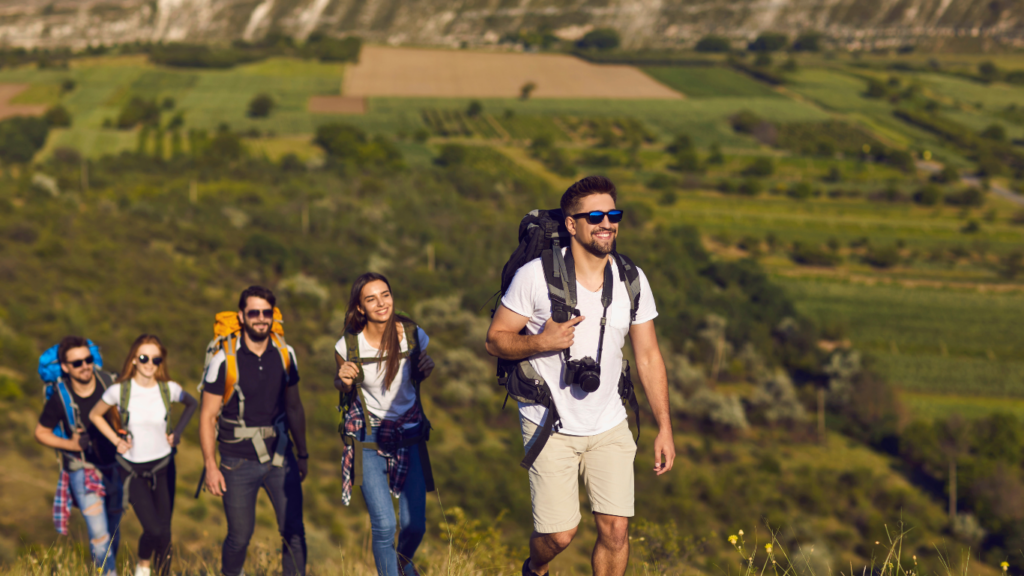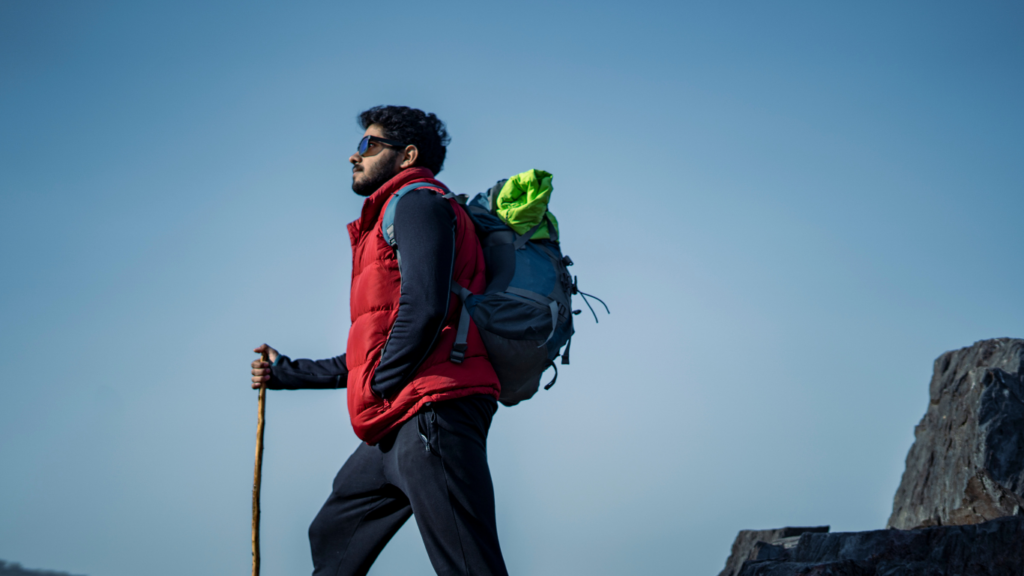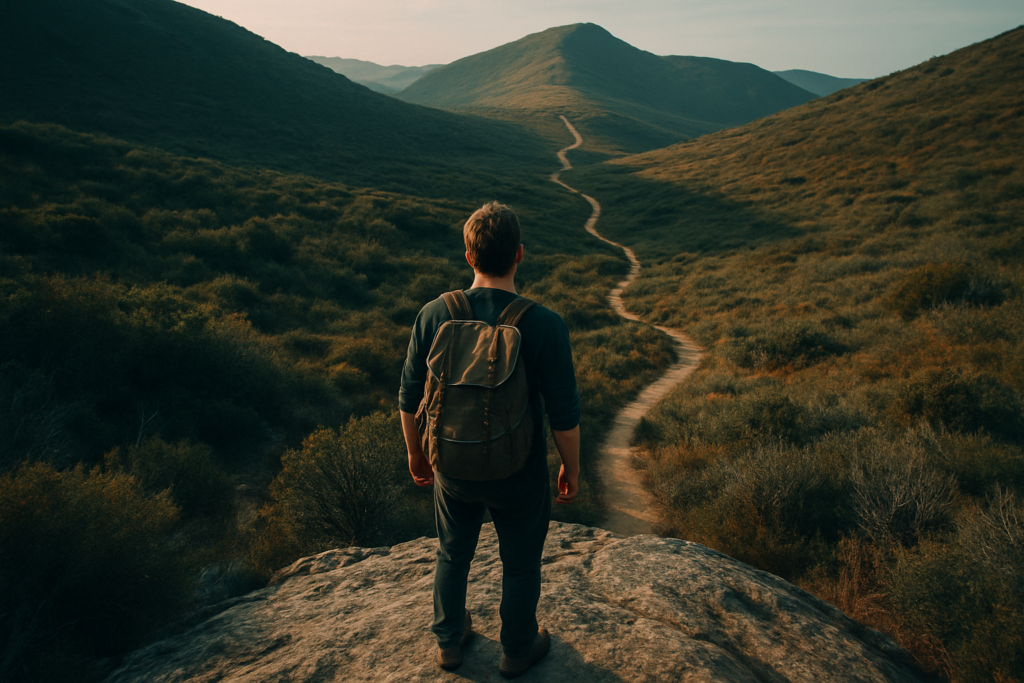Importance of Scenic Hiking Routes
Scenic hiking routes offer more than just physical exercise. They provide mental and emotional benefits by allowing hikers to immerse themselves in nature. Research from the American Psychological Association shows that spending time in natural settings reduces stress and enhances mood.
Unique landscapes make hiking more enjoyable. Locations like the Appalachian Trail, the Pacific Crest Trail, and the Grand Canyon offer diverse visual experiences. These routes feature stunning vistas, diverse ecosystems, and natural landmarks.
Scenic routes motivate beginners. Beautiful trails with varied terrains captivate those new to hiking, encouraging them to pursue the activity regularly. Gaining confidence in picturesque environments helps build a sustained interest in hiking.
Hiking scenic routes fosters environmental appreciation. As hikers traverse different landscapes, they develop a deeper reverence for nature. This appreciation fosters conservation efforts and encourages responsible outdoor behavior.
Essential Gear for Beginners
Selecting the right gear is crucial for an enjoyable and safe hiking experience. Beginners should focus on footwear, clothing, navigation tools, hydration, and nutrition.
Footwear and Clothing
Wear sturdy, comfortable hiking boots to protect your feet on uneven terrain. Look for options with ankle support and waterproof features to manage different weather conditions. Choose moisture-wicking socks to reduce blisters and keep feet dry.
Layering is key for clothing. Use a moisture-wicking base layer to manage sweat, an insulating middle layer for warmth, and a waterproof top layer to shield against rain and wind. Opt for quick-drying materials like polyester or nylon.
Navigation Tools
A map and compass are essential for navigation. Even if you use GPS devices, it’s important to have these analog tools as backups. Learn basic map-reading and compass skills to stay oriented.
Carry a GPS device or a smartphone with offline maps for additional navigation support. Ensure your devices are fully charged before starting your hike.
Hydration and Nutrition
Bring at least two liters of water for a day hike. A hydration reservoir or water bottles can help keep you hydrated. Consider water purification tablets if you plan to refill from natural sources.
Pack high-energy snacks like nuts, dried fruit, and energy bars to maintain energy levels. Opt for lightweight, non-perishable items for convenience.
Top Scenic Hiking Routes in North America

North America offers some of the most breathtaking hiking routes that attract both beginners and seasoned hikers. Here are a couple of must-visit trails.
Appalachian Trail, USA
The Appalachian Trail (AT) spans over 2,190 miles from Georgia to Maine. As one of the longest hiking-only trails in the world, it’s a top choice for enthusiasts seeking diverse landscapes. The trail meanders through 14 states, offering panoramic views, dense forests, and serene rivers. Lock in one section at a time, like the Great Smoky Mountains for stunning vistas, to avoid feeling overwhelmed by the trail’s length.
Banff National Park, Canada
Banff National Park, located in Alberta, Canada, is known for its majestic Rocky Mountain landscapes and pristine glacial lakes. Trails here vary from easy to challenging, making it accessible for all skill levels. Explore the Lake Louise area and hike the Plain of Six Glaciers Trail for breathtaking views. The Larch Valley hike is especially scenic in autumn, displaying vivid fall colors against towering peaks.
These routes offer unforgettable experiences for beginner hikers seeking scenic beauty and adventure.
Must-Visit Scenic Trails in Europe
Europe offers some of the world’s most stunning hiking routes. Let’s explore a couple of must-visit scenic trails for beginners seeking breathtaking views and memorable experiences.
Tour du Mont Blanc, France/Italy/Switzerland
The Tour du Mont Blanc (TMB) spans approximately 105 miles, circling the Mont Blanc massif. This trail offers awe-inspiring vistas of alpine meadows, glacial valleys, and quaint villages. Typically, hikers complete the route in about 10 days, with options to shorten or extend the journey. Accommodation is plentiful, including mountain huts and charming inns. Prepare for varying weather conditions by packing waterproof gear and layering clothing. The TMB provides not just stunning scenery but also a cultural experience, crossing through three countries each with its unique charm.
The Dolomites, Italy
The Dolomites, located in northeastern Italy, are famous for their dramatic rock formations and lush green valleys. One standout trail is the Alta Via 1, which stretches about 75 miles from Lago di Braies to Belluno. This trail generally takes around 10 days to hike. Expect a mix of scenic landscapes, including:
- jagged peaks
- serene lakes
- picturesque alpine meadows
Due to the variation in elevation, layered clothing is essential for comfort. For accommodations, rifugi (mountain huts) offer convenient rest stops with stunning views. This trail blends natural beauty with historical significance, providing a unique hiking adventure for beginners.
Breathtaking Hiking Paths in Asia
Asia offers a range of scenic hiking routes that cater to both beginners and experienced hikers. This section explores must-visit hiking paths that promise breathtaking landscapes and unique cultural experiences.
Mount Fuji, Japan
Mount Fuji stands as Japan’s highest peak at 12,389 feet and attracts thousands of hikers annually. Climbing season typically runs from early July to early September to avoid snow conditions. During this period, the trails are well-marked and huts provide shelter. Beginner hikers often opt for the Yoshida Trail, which starts from the Fifth Station. The route provides multiple rest stops and fabulous views of Lake Yamanaka. Reaching the summit for the sunrise, known as Goraiko, is a popular goal and offers a truly breathtaking experience.
Drakensberg Traverse, South Africa
The Drakensberg Traverse, located in the Drakensberg Mountains, offers a range of scenic experiences. Although this range spans multiple countries, the traverse is primarily located in South Africa. The trail runs over 40 miles and features dramatic cliffs, rolling hills, and diverse wildlife. It usually takes 5-6 days to complete the trek, depending on one’s pace and fitness level. Points of interest include the Amphitheatre, which features one of the world’s highest waterfalls, the Tugela Falls. Beginners should consider guided hikes for a safer and more enjoyable experience, especially given the trail’s rugged terrain.
Safety Tips for Beginner Hikers
Safety in hiking is crucial, regardless of the trail’s difficulty. New hikers can avoid many common issues by following some fundamental guidelines.
Plan Your Route
- Before starting, research the trail thoroughly.
- Gather information about distance, elevation gain, and weather conditions.
- It’s important to know the location of rest points and water sources.
Check the Weather
Check the local weather forecast prior to heading out. Weather can change rapidly, especially in mountainous regions. Pack appropriate clothing and gear for expected conditions.
Bring the Right Gear
Essential gear includes:
- a map, compass,
- first aid kit
- enough food
- water
Wear sturdy hiking boots and appropriate clothing for the weather. A backpack with these items ensures preparedness.
Stay Hydrated
Dehydration can occur quickly during physical activity. Carry sufficient water, using a hydration pack or water bottles. On longer hikes, consider bringing a water filter or purification tablets to refill from natural sources.
Tell Someone Your Plans
Always inform a friend or family member of your hiking plans. Share details of your route and expected return time. In an emergency, this information can be vital for rescue operations.
Stay on Marked Trails
Stick to designated paths to avoid getting lost or damaging fragile ecosystems. Straying off-track can lead to dangerous situations, especially for beginners unfamiliar with the area.
Know Your Limits
Avoid pushing too hard or attempting overly strenuous routes. Recognize signs of fatigue and rest when needed. Understanding and respecting your physical limits helps prevent injuries.
Carry a Fully Charged Mobile Phone
A mobile phone is crucial for communication in case of emergencies. Ensure it’s fully charged and keep it in a waterproof case. It’s an essential part of your safety kit.
Be Aware of Wildlife
Different regions have different wildlife dangers. Learn about the local wildlife and how to react if encountered. Carry bear spray in bear habitats and know basic snakebite first aid in regions with venomous snakes.
Pack Out What You Pack In
Leave no trace by carrying out all trash. Respect nature and keep trails clean for others and wildlife.
Beginners equipped with these safety tips can enjoy scenic hiking routes more confidently and responsibly.




